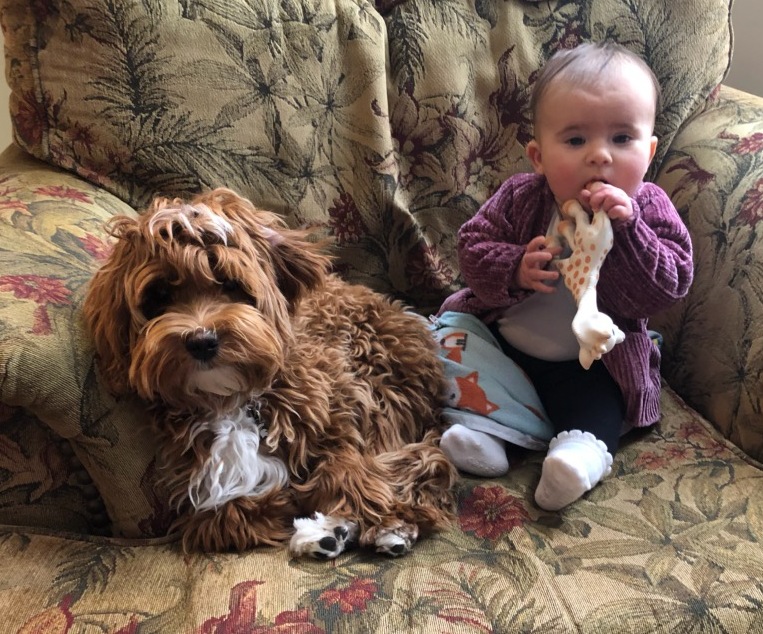Children and puppies can be an adorable partnership of friends who can learn and grow together as a loving part of your family. Many families look at adopting a new four-legged friend as an opportunity to add a playful and loved member to the family, but it can also be a great way to help teach a child responsibility and trust.
Here are some tips on how you can raise your puppy when having small children:
Make Sure Your Family is Ready for a Puppy
First and foremost, you should be certain that your family is ready to add a puppy to your home. If your son or daughter hasn’t had much interaction with pups, ask your friends or family if you can borrow their dog or visit them for a puppy playdate. This will be a good way to see how your child interacts with dogs, and you may even discover that your child dislikes dogs or that he or she may have an allergy. Fortunately, the labradoodle pups at Jubilee are hypoallergenic, making them great for families with allergies who want to add a new friend.
Discuss How to Behave Around Dogs
You should also make sure that you talk to your child about appropriate behaviors with dogs and outline some of the expectations and rules. If kids haven’t had much exposure to dogs or are still very young, they may not be familiar with how to behave around them or not fully understand how to properly communicate a pup.
Discuss with your child the importance of being gentle when playing with puppies so they don’t hurt them on accident and also talk through some of the different ways to read a dog’s reactions and body language. Explain that barking or growling might mean that the dog feels threatened or needs space, for example. By providing clear direction and guidance, you can help your child and new furry family member learn how to best get along.
Build Responsibility with Your Kids
Also, discuss with your child some of the expectations that you have for him or her in terms of what pet-related chores you both feel comfortable having them take on. Many children can build a sense of personal ownership and responsibility from doing assigned tasks, like changing food and water or taking their new friend for a daily walk. Be careful that you don’t ask more of your child than they can handle, though, as that may lead to a negative pet experience. You should also make sure to check up on their tasks, especially at first, to make sure that the puppy’s needs are not being neglected.
Ultimately, the responsibility for taking care of a new pet is yours, but by setting expectations and responsibilities early in the process and providing a guiding hand, you can help to foster a friendship that can last a lifetime.

